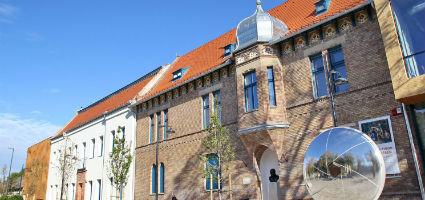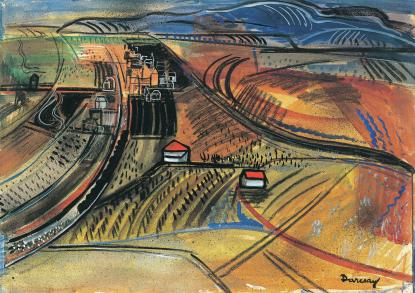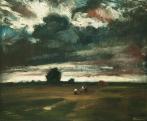2024. May 3. Friday
János Tornyai Museum - Hódmezővásárhely
 |
Address: 6800, Hódmezővásárhely Dr. Rapcsák András út 16-18.
Phone number: (62) 242-224
E-mail: tjm@tjm.hu
Opening hours: Tue-Sun 10-17
|
The exhibition has closed for visitors.
2015.05.17. - 2015.09.06.
Museum tickets, service costs:
|
Ticket for adults
|
600 HUF
|
|
|
Ticket for students
|
300 HUF
|
|
|
Ticket for pensioners
|
300 HUF
|
Jenő Barcsay (1900-1988) is one of the most influential personalities of 20th century Hungarian art, who as a painter and as a teacher also had a major impact on a line of artist generations. Jenő Barcsay was born 115 years ago, on 14 January 1900 in Katona, Transylvania. In the period from 1919 to 1924 he studied at the Academy of Fine Arts, his mentors were János Vaszary and Gyula Rudnay. He met Béla Endre in 1925, and spent summers in Mártély from 1925 to 1928.

He visited Paris twice on scholarship; the discovery of cubism there basically influenced the development of his artistic style. The town of Szentendre and the landscape surrounding it influenced him for life. In the early thirties he worked together at the artists' colony in Szentendre with János Tornyai. From 1945 the next three decades on he was a professor at the Academy of Fine Arts teaching anatomy and object representation. The world-renowned book Artistic Anatomy was translated into several languages and is still considered a standard book in art education.
Barcsay received the Kossuth Prize in 1954, in 1978 the permanent exhibition at the Barcsay Museum in Szentendre was opened the material for which as selected b Barcsay himself. He donated a considerable number of works before his death to the Tornyai János Museum. He died on 2 April 1988 in Budapest.
At the exhibition in Hódmezővásárhely, nearly 280 works of art reflect stages of Jenő Barcsay's oeuvre, through French Cubism inspire pictures in his early artistic period, art anatomy drawings made in the fifties up to the late monumental mosaics and geometric-abstract paintings. During the six decades of Barcsay being on the art scene , he consistently and consciously developed its distinctive style, the motifs of which stemmed from the sight of the real environment, however, he put this primary experience into more and more abstract shapes, abstract pictorial solutions.

He visited Paris twice on scholarship; the discovery of cubism there basically influenced the development of his artistic style. The town of Szentendre and the landscape surrounding it influenced him for life. In the early thirties he worked together at the artists' colony in Szentendre with János Tornyai. From 1945 the next three decades on he was a professor at the Academy of Fine Arts teaching anatomy and object representation. The world-renowned book Artistic Anatomy was translated into several languages and is still considered a standard book in art education.
Barcsay received the Kossuth Prize in 1954, in 1978 the permanent exhibition at the Barcsay Museum in Szentendre was opened the material for which as selected b Barcsay himself. He donated a considerable number of works before his death to the Tornyai János Museum. He died on 2 April 1988 in Budapest.
At the exhibition in Hódmezővásárhely, nearly 280 works of art reflect stages of Jenő Barcsay's oeuvre, through French Cubism inspire pictures in his early artistic period, art anatomy drawings made in the fifties up to the late monumental mosaics and geometric-abstract paintings. During the six decades of Barcsay being on the art scene , he consistently and consciously developed its distinctive style, the motifs of which stemmed from the sight of the real environment, however, he put this primary experience into more and more abstract shapes, abstract pictorial solutions.



